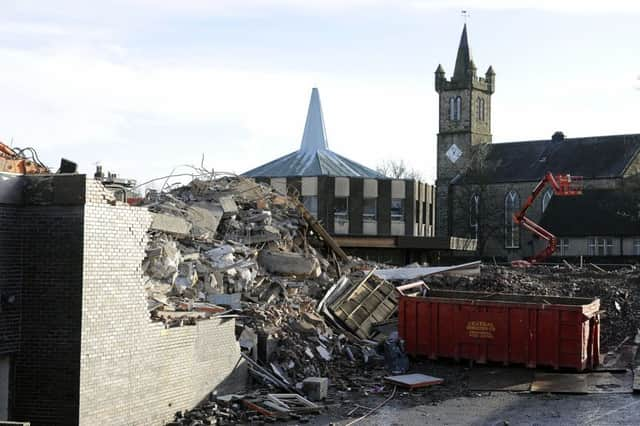Scottish towns look to residents to halt High Street decline


Community groups, charities and businesses are working with local authorities to draw up blueprints on how new life can breathed into districts in an era of online shopping and city dominance.
From the central belt to islands, councils are organising charrettes - planning forums open to the public - to discuss ways of tackling shop closures and improving streetscapes.
Advertisement
Hide AdAdvertisement
Hide AdIn Denny, a small town near Falkirk with a population of around 8,000, council developers hired a Glasgow based-firm of architects to hold a charette in May last year.
The ideas raised, including building a new town square and improved public seating, will be fed back into a masterplan for the town centre.
The Denny charrette followed several years of calls for locals to play more of a role in the planning process. Residents held a series of public demonstrations in 2010 to call on Falkirk Council to bring forward new plans to redevelop its run-down town centre, which was then dominated by a dilapidated residential and shopping block known as Church Walk. It was eventually demolished in stages by 2014 after a new regeneration plan was signed off by councillors.
“Town centres face huge challenges arising from economic conditions and the changing face of retailing, and it has been a tough battle in recent years to sustain the quality of town centres,” said a Falkirk Council spokesman.
“We remain firmly committed to delivering town centre regeneration opportunities through investment in town centres and works closely with members of the community to help realise their aspirations.”
A similar process is now taking place in the Renfrewshire town of Erskine.
Last week, a charrette took place in which residents, businesses and community organisations met with council officers to discuss issues facing the town centre and to develop practical proposals.
Among the ideas discussed was creating more affordable housing and space for start-up businesses and setting priorities for the maintenance of footpaths and woodland.
Advertisement
Hide AdAdvertisement
Hide AdCouncillor Terry Kelly, of the council’s planning policy board, said: “I want to stress that this is the beginning of our dialogue and collaborative working with the community.
“There is a lot of hard work ahead from not just the council but all sections of the community to make the plans a reality but this have been a very positive start.
“We will be coming forward with a town centre strategy and action plan for Erskine which will build on the work done so far.”
Meanwhile, the Bute town of Rothesay has been using social media to ask residents for their opinions ahead of a formal charrette later this month.
Ice Cream Architecture, the same firm which worked in Denny, is leading a campaign titled ‘Building A Better Bute.
As well as canvassing opinion on the streets, it has created a Facebook forum in which residents are asked to submit their opinions.
Smaller town centres, particularly those in central Scotland, have struggled in recent years as Glasgow and Edinburgh begin to dominate the retail market north of the border.
A 2015 report by Colliers International found Scotland’s two biggest cities will draw more than £1 billion of major retail investment while smaller town centres struggle for survival.
Advertisement
Hide AdAdvertisement
Hide AdThe research suggests that while the largest centres of population strengthen their dominance, secondary locations continue to face pressures on rents and the prospect of “two long years” before the next rates revaluation takes post-recession values into account.
